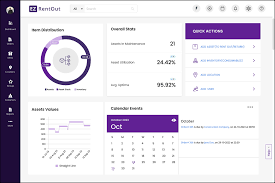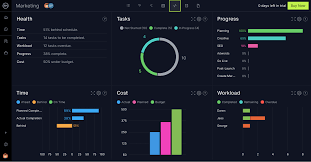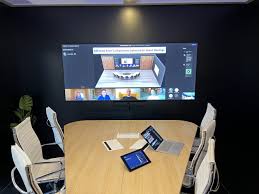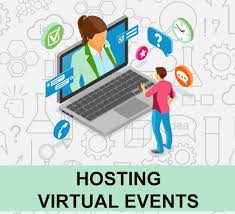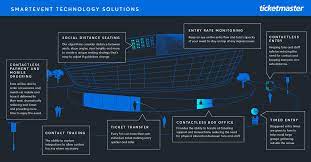Streamline Your Event Rental Business with Inventory Management Software
Running an event rental business comes with its own set of challenges, especially when it comes to managing your inventory effectively. Keeping track of all your rental items, their availability, and ensuring smooth operations can be a daunting task without the right tools in place.
This is where event rental inventory management software can make a significant difference. By leveraging the power of technology, you can streamline your processes, improve efficiency, and ultimately grow your business.
The Benefits of Event Rental Inventory Management Software:
- Centralized Inventory Tracking: With inventory management software, you can keep track of all your rental items in one centralized location. This makes it easy to see what items are available, reserved, or out for rent at any given time.
- Automated Order Management: Say goodbye to manual order processing. The software can automate tasks such as booking confirmations, invoicing, and payment reminders, saving you time and reducing the risk of errors.
- Real-Time Availability Updates: Keep your customers informed about item availability in real-time. This transparency can help prevent double bookings and improve customer satisfaction.
- Reporting and Analytics: Gain valuable insights into your business performance with reporting features. Track key metrics such as revenue generated, popular rental items, and customer trends to make informed decisions.
Choosing the Right Event Rental Inventory Management Software:
When selecting software for your event rental business, consider factors such as scalability, ease of use, integration capabilities with other tools (such as accounting software), and customer support options. Look for a solution that fits your specific needs and budget.
Investing in event rental inventory management software is an investment in the future success of your business. By optimizing your operations and providing a seamless experience for both you and your customers, you can take your event rental business to new heights.
Contact us today to learn more about how our inventory management software can transform the way you manage your event rental business!
8 Essential Tips for Mastering Event Rental Inventory Management Software
- Choose a user-friendly event rental inventory management software to streamline operations.
- Utilize software features like barcode scanning for efficient tracking of inventory items.
- Set up automated alerts and notifications to prevent stockouts or overbooking.
- Integrate your inventory software with accounting systems for seamless financial management.
- Regularly update and maintain accurate inventory records in the software to avoid discrepancies.
- Use reporting tools within the software to analyze trends, forecast demand, and optimize inventory levels.
- Train your staff on how to effectively use the event rental inventory management software for maximum efficiency.
- Periodically review and refine your processes based on insights gathered from the software analytics.
Choose a user-friendly event rental inventory management software to streamline operations.
Selecting a user-friendly event rental inventory management software is crucial for streamlining operations in your business. By choosing a software solution that is intuitive and easy to navigate, you can enhance efficiency, reduce training time for staff, and minimize errors in managing your rental inventory. A user-friendly interface ensures that all team members can quickly adapt to the system, enabling smoother workflows and improved productivity across the board.
Utilize software features like barcode scanning for efficient tracking of inventory items.
To enhance the efficiency of tracking inventory items in your event rental business, consider utilizing software features such as barcode scanning. By incorporating barcode scanning technology into your inventory management software, you can streamline the process of identifying, locating, and updating the status of rental items. This feature enables quick and accurate tracking of inventory, reducing human error and saving valuable time. Barcode scanning simplifies inventory management tasks, making it easier to maintain an organized and up-to-date inventory system for your events.
Set up automated alerts and notifications to prevent stockouts or overbooking.
Setting up automated alerts and notifications is a crucial tip for effective event rental inventory management software. By implementing this feature, you can proactively prevent stockouts or overbooking situations. Automated alerts can notify you when inventory levels are running low, allowing you to restock in a timely manner and avoid disappointing customers. Similarly, notifications can help you avoid overbooking by alerting you when a particular item is already reserved for a specific date or time. This proactive approach ensures smooth operations, improves customer satisfaction, and ultimately contributes to the success of your event rental business.
Integrate your inventory software with accounting systems for seamless financial management.
Integrating your event rental inventory management software with accounting systems is a crucial tip for seamless financial management. By linking these two systems, you can streamline processes such as invoicing, tracking expenses, and reconciling payments. This integration eliminates manual data entry errors, saves time on administrative tasks, and provides a more accurate overview of your financial health. With real-time synchronization between your inventory and accounting systems, you can make informed financial decisions and ensure the smooth operation of your event rental business.
Regularly update and maintain accurate inventory records in the software to avoid discrepancies.
To ensure smooth operations and prevent discrepancies, it is crucial to regularly update and maintain accurate inventory records in your event rental inventory management software. By keeping your inventory information current, you can avoid double bookings, ensure item availability, and provide a seamless experience for your customers. Consistent updates also enable you to make informed decisions about restocking, pricing, and overall business strategy. Taking the time to maintain accurate inventory records will ultimately save you time and resources in the long run while enhancing the efficiency of your event rental business.
Use reporting tools within the software to analyze trends, forecast demand, and optimize inventory levels.
Utilize the reporting tools available within your event rental inventory management software to gain valuable insights into your business. By analyzing trends, forecasting demand, and optimizing inventory levels, you can make informed decisions that drive efficiency and profitability. These tools empower you to stay ahead of the curve, anticipate customer needs, and ensure that you have the right items in stock at the right time. Take advantage of data-driven analytics to enhance your inventory management strategy and elevate your event rental business to new heights.
Train your staff on how to effectively use the event rental inventory management software for maximum efficiency.
To maximize efficiency in your event rental business, it is crucial to train your staff on how to effectively use the event rental inventory management software. By providing comprehensive training, your team can fully leverage the capabilities of the software, streamline processes, and ensure accurate inventory tracking. Investing time and resources into staff training will not only improve operational efficiency but also enhance customer service and overall business performance.
Periodically review and refine your processes based on insights gathered from the software analytics.
To maximize the benefits of event rental inventory management software, it is crucial to periodically review and refine your processes based on insights gathered from the software analytics. By analyzing data such as inventory turnover rates, popular rental items, and customer booking patterns, you can identify areas for improvement and optimization. This proactive approach allows you to make informed decisions that enhance efficiency, reduce costs, and ultimately boost your business’s overall performance.

